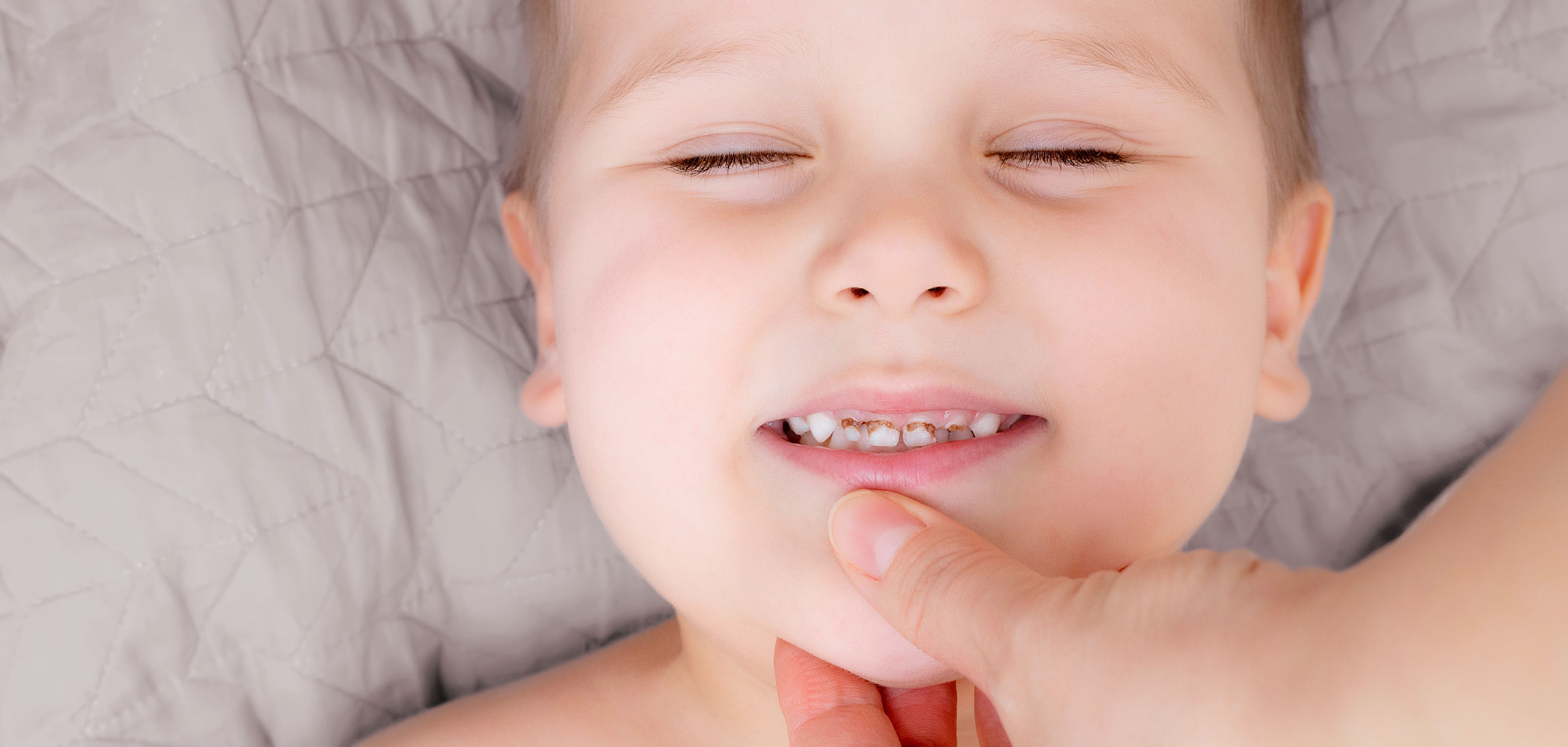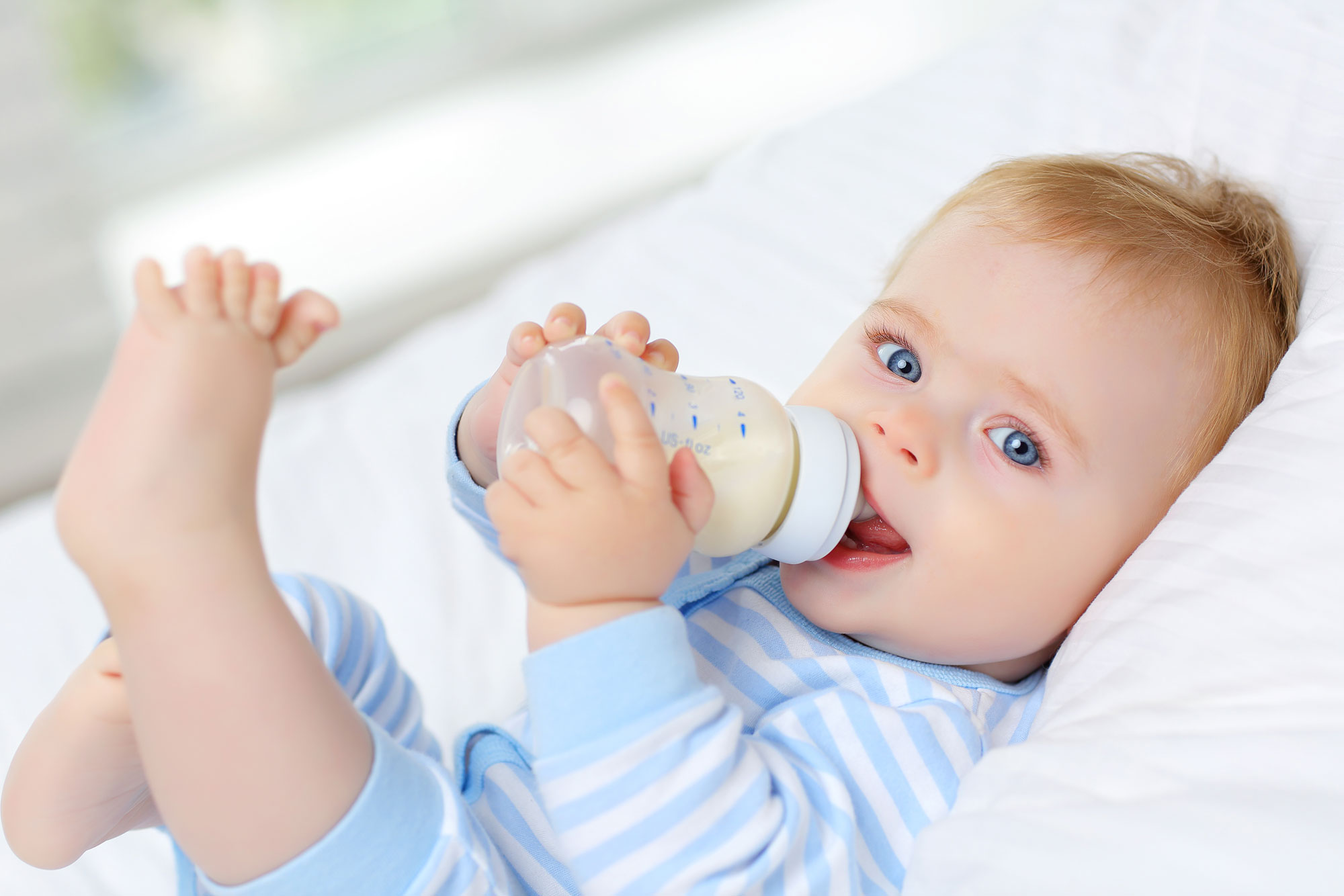Baby bottle tooth decay is basically described as the problems in which the teeth in the anterior parts of the upper jaw appear with brown and small spots in milk teeth. These stains are tooth decays. However, contrary to popular belief, bottle rot does not occur with the use of a bottle. It is predominantly associated with the elements at the tip and inside of the bottle.
What is Baby Bottle Tooth Decay?
Baby bottle tooth decay is the decay of your baby's first teeth as a result of bottle feeding. These cavities occur when sugary drinks such as fruit juice, milk or formula are left without cleaning for a long time after being bottled.
A bottle can help your baby fall asleep, but this is extremely harmful to oral and dental health.

What Causes Baby Bottle Tooth Decay?
Baby bottle teeth decay is mostly seen in the upper anterior teeth. However, other teeth are often affected by caries. There are many factors that can cause tooth decay in babies and young children. The main reason for this is the frequent and prolonged exposure of the baby's teeth to sugar-containing beverages. Therefore, baby bottle tooth decay occurs when the baby is given a bottle frequently to put him to sleep or to calm him down.
Tooth decay in infants and young children is a disease that can begin with the transmission of cavity-causing bacteria from the mother (or primary caregiver) to the infant. This bacterium is transmitted from the saliva to the baby. If the mother puts the baby's feeding spoon in her mouth or cleans the pacifier in her mouth, the related bacteria can be passed on to the baby.
Considering the above factors, it is seen that bottle rot is not caused by bottle use. The main reason is that the bottle is used incorrectly and the baby's mouth is not cleaned properly.
What are the Symptoms?
Baby bottle tooth decay symptoms cannot be identified by children at an early age. For this reason, this type of bruises can usually be understood by the emergence of unbearable pain or fractures due to the lack of understanding of the first symptoms. In order to solve these problems seen in early childhood, it is very important to take care of oral and dental health in babies. At the same time, the use of caries prevention methods is also very effective in preventing the formation of baby bottle caries.
The main symptoms of baby bottle teeth decay are as follows:
- Dental infections
- Small stains on teeth
- Toothache
- Speech disorders
- Bad smell
- Inflammatory problems in the tooth
- Tooth fractures and tooth loss
Since these symptoms cannot be understood by children belonging to the younger age group, they must be checked by the parents.
How Is it Treated?
The treatment of baby bottle tooth decay that occurs in early childhood can be quite difficult for both the child and the family. However, specialist physicians can save your child from these problems with successful treatments.
During the treatment, the bruises are cleaned and if the bruises reach the nerves, the nerves are repaired. However, if the caries are too advanced and become incurable, the tooth can be extracted.
What Can You Do to Prevent Baby Bottle Tooth Decay?
It is very important to give up the bottle feeding behavior while putting your baby to sleep in order to prevent the baby bottle tooth decay problem. At the same time, you should stay away from the behavior of using the common spoon with your baby.
Other measures you can take to prevent baby bottle teeth decay are as follows:
- Babies should finish their bottles and their gums or teeth should be cleaned before going to sleep. Therefore, babies should be prevented from falling asleep with their feeding bottles.
- Wiping your child's gums with a clean, damp gauze pad after each feeding will help remove food residues from the mouth.
- Regular dental examinations will be very beneficial as soon as your child's first tooth appears.
- The teeth of children between the ages of 3 and 6 should be brushed with a pea-sized amount of toothpaste, again using a soft children's toothbrush.
- After your child's milk teeth erupt, the teeth and tongue should be gently cleaned with a child's toothbrush and baby toothpaste.
- Children should be accustomed to drinking from a glass as soon as possible.
